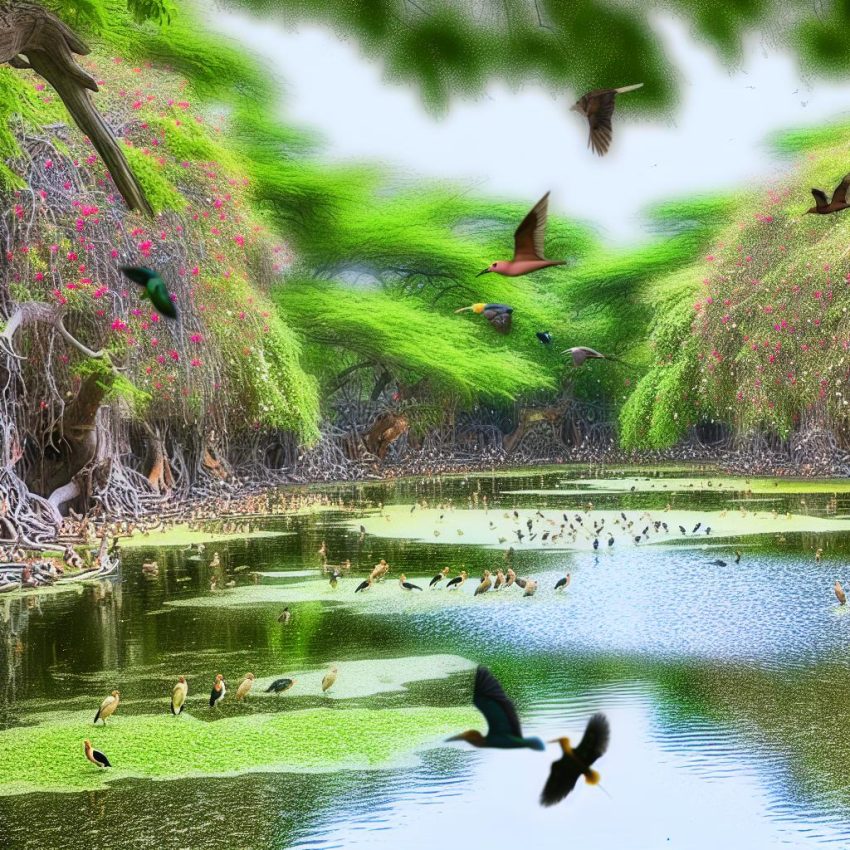Introduction to Ranganathittu Bird Sanctuary
Situated in the beautiful southern region of India, specifically in the state of Karnataka, Ranganathittu Bird Sanctuary stands as a prominent natural reserve celebrated for its remarkable avian diversity. Spreading over an area of approximately 40 acres, the sanctuary comprises six small islets on the banks of the vibrant Cauvery River, not far from the historic town of Srirangapatna. This sanctuary is a magnet for birdwatchers and nature aficionados, providing a sanctuary for a wide array of bird species.
Geographical Setting
The sanctuary enjoys a strategic location on the Cauvery River, offering an ideal setting for numerous resident and migratory birds. Its location in proximity to Srirangapatna, just around 16 kilometers from the city of Mysuru, makes it conveniently accessible to tourists seeking immersion in nature. The surrounding wetlands and lush greenery around the river not only attract birds but also create a vibrant ecological zone, supporting a vast range of biodiversity.
The geographical positioning on the banks of a perennial river significantly contributes to the thriving ecosystem within the sanctuary. Such a setting supports a rich tapestry of life, where both flora and fauna coexist, creating a dynamic and interactive environment. The river ensures a continuous supply of vital water resources, sustaining the sanctuary’s lush vegetation and supporting the diverse wildlife that resides there.
History and Establishment
The roots of Ranganathittu Bird Sanctuary can be traced back to the foresighted efforts of Dr. Salim Ali, a legendary ornithologist who is often referred to as the “Birdman of India.” In 1940, Dr. Ali recognized the area’s potential as a rich habitat for birds and was instrumental in persuading the then Maharaja of Mysore to designate it as a protected sanctuary. The establishment of Ranganathittu marked a significant milestone in the conservation of avian species in India, setting a precedent for other similar initiatives across the country.
Over the years, the sanctuary has played a crucial role in the conservation of various bird species and their natural habitats. It has also served as a hub for ornithological research and education, drawing scholars, researchers, and nature enthusiasts from different parts of the world.
Flora and Fauna
The sanctuary is adorned with a diverse range of flora and fauna that enrich its ecological landscape. Several aquatic plants thrive in the wetlands, while the terrestrial vegetation features an assortment of trees, including Eucalyptus and Bamboo. These trees are crucial as they provide necessary nesting sites for the birds that inhabit the sanctuary.
In addition to its botanical wealth, Ranganathittu is also home to various animal species. Marsh crocodiles can often be seen basking on the riverbanks, and sightings of playful otters are not uncommon. These animals add to the sanctuary’s natural allure, engaging visitors with their presence and adding to the biodiversity balance in this protected area.
Avian Diversity
Ranganathittu Bird Sanctuary boasts an impressive list of over 200 recorded bird species, making it a veritable haven for birdwatchers. Among the notable birds are the striking Painted Stork, the agile Pied Kingfisher, the elegant Egret, and the distinctively billed Spoonbill. The sanctuary witnesses an influx of migratory birds every winter, with species arriving from distant lands such as Siberia and the Himalayas.
These birds not only add to the richness of the sanctuary’s avian population but also highlight the global importance of Ranganathittu as a significant stopover in their migratory routes. The seasonal variation in bird species presents a continuously changing tableau of avian life, captivating visitors with varied and fascinating observations throughout the year.
Visitor Information
Visitors to Ranganathittu Bird Sanctuary can take delight in guided boat tours that provide a close-up view of the sanctuary’s stunning avian inhabitants. These boat rides offer unique opportunities for birdwatching and photography from the water, bringing visitors up close to the birds in their natural habitats.
The optimal time for visiting the sanctuary is between June and November when bird activity is at its peak, providing a lively and engaging experience for visitors. The sanctuary also puts great emphasis on education, offering programs that inform the public about the local wildlife and ongoing conservation measures. Educational displays spread throughout the sanctuary help visitors understand the intricate balance of this ecosystem and the importance of protecting such valuable habitats.
For those interested in more comprehensive information, the official Karnataka Tourism website serves as a resourceful guide, providing valuable insights into visiting the sanctuary and understanding its ecological significance.
Conclusion
Ranganathittu Bird Sanctuary stands as a crucial refuge for many bird species, contributing significantly to the conservation of biodiversity. Its unique ecosystem and rich biological diversity make it a key destination for ecotourism in southern India. The sanctuary not only safeguards avian life but also fosters an appreciation for the intricate beauty and complexity of natural habitats, ensuring that future generations can enjoy and learn from such ecological treasures.
